|
시장보고서
상품코드
1800237
지역 난방 시장 : 예측(2025-2030년)District Heating Market - Forecasts fom 2025 to 2030 |
||||||
지역 난방 시장은 2025년 2,051억 7,000만 달러에서 2030년에는 2,719억 6,900만 달러에 이르고, CAGR 5.80%를 보일 것으로 예측됩니다.
지역 난방 세계 시장은 급속한 도시화, 산업화, 지속 가능한 에너지 솔루션으로의 세계 전환으로 인해 2025-2030년 사이에 크게 성장할 것으로 예측됩니다. 지역 난방 시스템은 중앙집중식 열원에서 주택, 상업시설, 산업시설에 열을 공급하여 에너지 효율이 높고 비용 효율적인 난방 솔루션을 제공합니다. 이 시장은 친환경 난방 시스템에 대한 수요 증가, 재생 에너지 통합에 대한 정부 지원, 다양한 응용 분야에서 지역 난방의 유연성 등으로 뒷받침되고 있습니다. 공급망 혼란과 높은 초기 투자 비용 등의 문제에도 불구하고, 시장 전망은 특히 아시아태평양에서는 여전히 밝습니다.
시장 성장 촉진요인
도시화와 산업화
도시화와 산업화의 가속화는 지역 난방 시장의 주요 촉진요인입니다. 특히 신흥 경제국에서는 도시 인구 증가와 인프라 확충에 따라 효율적인 난방 시스템에 대한 수요가 증가하고 있습니다. 새로운 주거 및 상업용 건물, 스마트 시티 프로젝트는 에너지 수요를 충족시키기 위해 첨단 난방 솔루션이 필요합니다. 지역 난방 시스템은 넓은 지역을 효율적으로 커버할 수 있기 때문에 이러한 용도에 적합하며, 인구 밀도가 높은 도심 및 산업시설의 에너지 수요를 지원합니다.
친환경 솔루션에 대한 정부 지원
재생 가능하고 친환경적인 열원을 장려하는 정부의 이니셔티브는 지역 난방 시장을 크게 부추기고 있습니다. 이산화탄소 배출과 지구온난화에 대한 우려가 커지면서 정부와 국제기구는 지속가능한 에너지 시스템을 우선순위로 삼고 있습니다. 지역 난방은 태양광, 풍력, 지열 등 재생에너지를 유연하게 통합할 수 있기 때문에 이러한 목표에 부합하고 채택이 증가하고 있습니다. 동유럽의 지역 난방 시스템 업그레이드에 초점을 맞춘 EU의 Horizon 2020 자금으로 지원되는 Keep Warm 프로젝트와 같은 프로그램은 현대화와 지속가능성을 촉진함으로써 시장 참여자들에게 새로운 기회를 창출하고 있습니다.
에너지 효율과 비용 효율성
지역 난방 시스템은 에너지 효율이 높고 개별 난방 솔루션에 비해 연료 소비와 운영 비용을 절감할 수 있습니다. 신재생에너지를 포함한 여러 열원을 통합할 수 있기 때문에 상업용 및 가정용 모두에 다용도로 사용할 수 있습니다. 이러한 시스템의 비용 효율성과 확장성은 가정, 상업용 건물 및 산업 부문에서 채택을 증가시키고 있으며, 이해관계자들이 지속 가능하고 경제적인 난방 솔루션을 찾고 있기 때문에 시장 성장을 가속하고 있습니다.
시장 성장 억제요인
지역 난방 시장은 인프라 개척을 위한 초기 투자비용이 높다는 문제에 직면해 있으며, 이는 자금이 한정된 지역에서의 채택을 저해할 수 있습니다. 특히 코로나19 팬데믹과 같은 세계적 사건으로 인한 공급망 혼란은 부품 및 인력 수급에 영향을 미치고, 프로젝트 일정과 비용에 영향을 미치고 있습니다. 또한, 기존 인프라를 최신 지역 난방 시스템으로 개조하는 복잡성은 특히 오래된 도시 지역에서는 기술적, 재정적 장벽이 될 수 있습니다. 혁신적인 자금 조달 모델과 간소화된 공급망을 통해 이러한 문제를 해결하는 것이 지속적인 시장 확대에 필수적입니다.
목차
제1장 주요 요약
제2장 시장 현황
- 시장 개요
- 시장의 정의
- 조사 범위
- 시장 세분화
제3장 비즈니스 상황
- 시장 성장 촉진요인
- 시장 성장 억제요인
- 시장 기회
- Porter의 Five Forces 분석
- 업계 밸류체인 분석
- 정책 및 규제
- 전략적 제안
제4장 기술 전망
제5장 지역 난방 시장 : 플랜트 유형별
- 서론
- 보일러
- 열병합발전(CHP)
- 기타
제6장 지역 난방 시장 : 용도별
- 서론
- 산업
- 상업
- 주택
제7장 지역 난방 시장 : 열원별
- 서론
- 석탄
- 천연가스
- 석유
- 재생에너지원
- 기타
제8장 지역 난방 시장 : 지역별
- 서론
- 북미
- 미국
- 캐나다
- 멕시코
- 남미
- 브라질
- 아르헨티나
- 기타
- 유럽
- 독일
- 프랑스
- 영국
- 기타
- 중동 및 아프리카
- 사우디아라비아
- 아랍에미리트(UAE)
- 기타
- 아시아태평양
- 중국
- 인도
- 일본
- 한국
- 대만
- 태국
- 인도네시아
- 기타
제9장 경쟁 환경과 분석
- 주요 기업과 전략 분석
- 시장 점유율 분석
- 합병, 인수, 합의 및 협업
- 경쟁 대시보드
제10장 기업 개요
- Fortum
- Vattenfall AB
- Danfoss Group
- Engie
10.5.NRG Energy, Inc.
10.6.Statkraft AS
10.7.Kingspan Group
- Shinryo Corporation
- Vital Energi Ltd.
- Goteborg Energi
10.11.Alfa Laval AB
10.12.Ramboll Group A/S
- Orsted A/S
제11장 조사 방법
LSH 25.09.03The district heating market is expected to grow from USD205.170 billion in 2025 to USD271.969 billion in 2030, at a CAGR of 5.80%.
The global district heating market is poised for significant growth from 2025 to 2030, driven by rapid urbanization, industrialization, and a global shift toward sustainable energy solutions. District heating systems, which deliver heat from centralized sources to residential, commercial, and industrial buildings, offer energy-efficient and cost-effective heating solutions. The market is propelled by the increasing demand for eco-friendly heating systems, government support for renewable energy integration, and the flexibility of district heating in diverse applications. Despite challenges such as supply chain disruptions and high initial investment costs, the market's outlook remains positive, particularly in the Asia-Pacific region.
Market Drivers
Urbanization and Industrialization
The accelerating pace of urbanization and industrialization is a primary driver of the district heating market. As urban populations grow and infrastructure development expands, particularly in emerging economies, the demand for efficient heating systems increases. New residential and commercial buildings, as well as smart city projects, require advanced heating solutions to meet energy demands. District heating systems are well-suited for these applications due to their ability to serve large areas efficiently, supporting the energy needs of densely populated urban centers and industrial facilities.
Government Support for Eco-Friendly Solutions
Government initiatives promoting renewable and eco-friendly heat sources are significantly boosting the district heating market. Rising concerns over carbon emissions and global warming have prompted governments and international organizations to prioritize sustainable energy systems. District heating's flexibility in integrating renewable sources like solar, wind, and geothermal power aligns with these goals, enhancing its adoption. Programs like the EU's Horizon 2020-funded Keep Warm project, which focuses on upgrading district heating systems in Eastern Europe, are creating new opportunities for market players by encouraging modernization and sustainability.
Energy Efficiency and Cost-Effectiveness
District heating systems are highly energy-efficient, reducing fuel consumption and operational costs compared to individual heating solutions. Their ability to integrate multiple heat sources, including renewables, makes them versatile for both commercial and domestic applications. The cost-efficiency and scalability of these systems are increasing their adoption in households, commercial buildings, and industrial sectors, driving market growth as stakeholders seek sustainable and economical heating solutions.
Market Restraints
The district heating market faces challenges due to high initial investment costs for infrastructure development, which can deter adoption in regions with limited funding. Supply chain disruptions, particularly those lingering from global events like the COVID-19 pandemic, have impacted the availability of components and labor, affecting project timelines and costs. Additionally, the complexity of retrofitting existing infrastructure with modern district heating systems can pose technical and financial barriers, particularly in older urban areas. Addressing these challenges through innovative financing models and streamlined supply chains will be critical for sustained market expansion.
Market Segmentation
By Application
The market is segmented into residential, commercial, and industrial applications. Residential applications are growing due to the increasing demand for cost-effective heating in urban households. Commercial applications, including office buildings and retail spaces, dominate due to the scalability of district heating systems. Industrial applications are also significant, driven by the need for efficient heating in manufacturing and processing facilities.
By Geography
The market is segmented into North America, Europe, Asia-Pacific, South America, and the Middle East and Africa. Asia-Pacific is experiencing rapid growth, driven by urbanization, rising energy demands, and government support for sustainable heating in countries like China and India. Europe remains a key market, supported by initiatives like Keep Warm and substantial investments in renewable energy integration. North America, South America, and the Middle East and Africa are emerging markets, fueled by increasing infrastructure development and environmental awareness.
The district heating market is set for robust growth from 2025 to 2030, driven by urbanization, government support for eco-friendly heating, and the energy efficiency of district heating systems. Despite challenges from high costs and supply chain issues, the market's outlook is positive, particularly in Asia-Pacific and Europe. Industry players must focus on integrating renewable energy sources, leveraging innovative financing, and addressing supply chain constraints to capitalize on the growing demand for sustainable district heating solutions.
Key Benefits of this Report:
- Insightful Analysis: Gain detailed market insights covering major as well as emerging geographical regions, focusing on customer segments, government policies and socio-economic factors, consumer preferences, industry verticals, and other sub-segments.
- Competitive Landscape: Understand the strategic maneuvers employed by key players globally to understand possible market penetration with the correct strategy.
- Market Drivers & Future Trends: Explore the dynamic factors and pivotal market trends and how they will shape future market developments.
- Actionable Recommendations: Utilize the insights to exercise strategic decisions to uncover new business streams and revenues in a dynamic environment.
- Caters to a Wide Audience: Beneficial and cost-effective for startups, research institutions, consultants, SMEs, and large enterprises.
What do businesses use our reports for?
Industry and Market Insights, Opportunity Assessment, Product Demand Forecasting, Market Entry Strategy, Geographical Expansion, Capital Investment Decisions, Regulatory Framework & Implications, New Product Development, Competitive Intelligence
Report Coverage:
- Historical data from 2020 to 2024 & forecast data from 2025 to 2030
- Growth Opportunities, Challenges, Supply Chain Outlook, Regulatory Framework, and Trend Analysis
- Competitive Positioning, Strategies, and Market Share Analysis
- Revenue Growth and Forecast Assessment of segments and regions including countries
- Company Profiling (Strategies, Products, Financial Information, and Key Developments among others.
District Heating Market Segmentation:
By Plant Type
- Boiler
- Combined Heat and Power (CHP)
- Others
By Application
- Industrial
- Commercial
- Residential
By Heat Source
- Coal
- Natural Gas
- Oil & Petroleum
- Renewable Energy Source
- Others
By Geography
- North America
- USA
- Canada
- Mexico
- South America
- Brazil
- Argentina
- Others
- Europe
- Germany
- France
- UK
- Others
- Middle East and Africa
- Saudi Arabia
- UAE
- Others
- Asia Pacific
- China
- India
- Japan
- South Korea
- Taiwan
- Thailand
- Indonesia
- Others
TABLE OF CONTENTS
1. EXECUTIVE SUMMARY
2. MARKET SNAPSHOT
- 2.1. Market Overview
- 2.2. Market Definition
- 2.3. Scope of the Study
- 2.4. Market Segmentation
3. BUSINESS LANDSCAPE
- 3.1. Market Drivers
- 3.2. Market Restraints
- 3.3. Market Opportunities
- 3.4. Porter's Five Forces Analysis
- 3.5. Industry Value Chain Analysis
- 3.6. Policies and Regulations
- 3.7. Strategic Recommendations
4. TECHNOLOGICAL OUTLOOK
5. DISTRICT HEATING MARKET BY PLANT TYPE
- 5.1. Introduction
- 5.2. Boiler
- 5.3. Combined Heat and Power (CHP)
- 5.4. Others
6. DISTRICT HEATING MARKET BY APPLICATION
- 6.1. Introduction
- 6.2. Industrial
- 6.3. Commercial
- 6.4. Residential
7. DISTRICT HEATING MARKET BY HEAT SOURCE
- 7.1. Introduction
- 7.2. Coal
- 7.3. Natural Gas
- 7.4. Oil & Petroleum
- 7.5. Renewable Energy Source
- 7.6. Others
8. DISTRICT HEATING MARKET BY GEOGRAPHY
- 8.1. Introduction
- 8.2. North America
- 8.2.1. USA
- 8.2.2. Canada
- 8.2.3. Mexico
- 8.3. South America
- 8.3.1. Brazil
- 8.3.2. Argentina
- 8.3.3. Others
- 8.4. Europe
- 8.4.1. Germany
- 8.4.2. France
- 8.4.3. United Kingdom
- 8.4.4. Others
- 8.5. Middle East & Africa
- 8.5.1. Saudi Arabia
- 8.5.2. UAE
- 8.5.3. Others
- 8.6. Asia Pacific
- 8.6.1. China
- 8.6.2. India
- 8.6.3. Japan
- 8.6.4. South Korea
- 8.6.5. Taiwan
- 8.6.6. Thailand
- 8.6.7. Indonesia
- 8.6.8. Others
9. COMPETITIVE ENVIRONMENT AND ANALYSIS
- 9.1. Major Players and Strategy Analysis
- 9.2. Market Share Analysis
- 9.3. Mergers, Acquisitions, Agreements, and Collaborations
- 9.4. Competitive Dashboard
10. COMPANY PROFILES
- 10.1. Fortum
- 10.2. Vattenfall AB
- 10.3. Danfoss Group
- 10.4. Engie
10.5.NRG Energy, Inc.
10.6.Statkraft AS
10.7.Kingspan Group
- 10.8. Shinryo Corporation
- 10.9. Vital Energi Ltd.
- 10.10. Goteborg Energi
10.11.Alfa Laval AB
10.12.Ramboll Group A/S
- 10.13. Orsted A/S




















